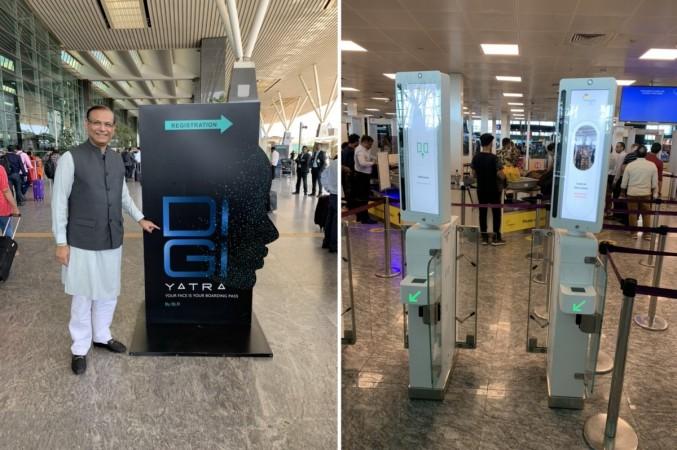Frequent travelers by air understand the hassles of multi-layered security checks at the airport before finally boarding the flight. For these reasons, passengers are advised to arrive at the airport 3 hours prior to departure in case of international flights. But the security checks are mandatory and a crucial part of the journey. Without an alternative, the traditional method of boarding flights is followed to this day. But soon, it could change - with Kempegowda International Airport (KIA) getting an essential upgrade.
DigiYatra is the much-needed alternative to today's flight boarding experience that will ensure a hassle-free and paperless journey. The first phase of DigiYatra is to be rolled out at several airports including the KIA, by the end of this year.

The final phase competition at the BIAL will be the largest deployment of an end-to-end paperless biometric program in Asia. There are 350 passenger touchpoint at KIA's Terminal 1. The newly-inaugurated Terminal-2 will also be using DigiYatra.
What is DigiYatra?
DigiYatra platform was rolled out in Bengaluru Airport in 2019 as an optional self-boarding method. DigiYatra basically turns your face into your boarding pass for future air travels at the Bengaluru Airport. This system digitally processes passengers at airports, without them having to show documents and boarding passes at multiple checkpoints.
How does DigiYatra work?

When the passenger arrives at the airport, proceed director towards e-gate and scan the boarding pass or e-ticket. Once validated using passenger dataset, a single biometric face token, and the gate opens. Passengers can follow the same procedure for the rest of the journey at the airport.
Benefits of DigiYatra
Digi Yatra has its own benefits and the civil aviation ministry isn't leaving any stone unturned to highlight those advantages. Frequent travelers benefit the most from DigiYatra platform as it simplifies checking in and boarding experience at the airports.
- Paperless self-boarding
- No need to show boarding pass or ID at multiple checkpoints at airports
- Less queue time
- Improved security as the system can map the passenger with the PNR
- Real-time information on passenger load














